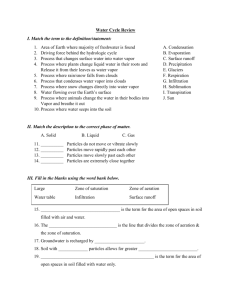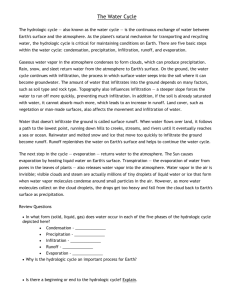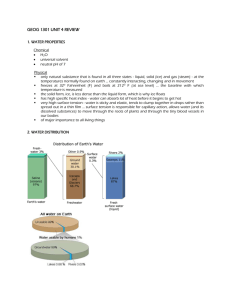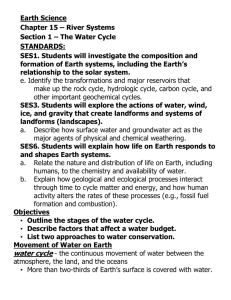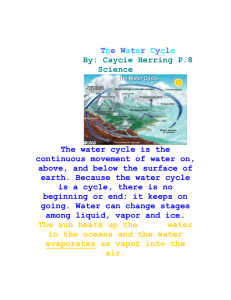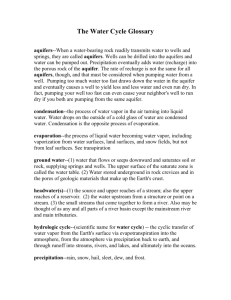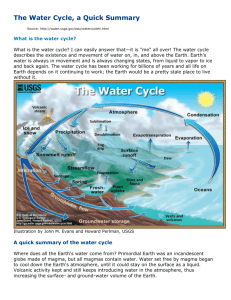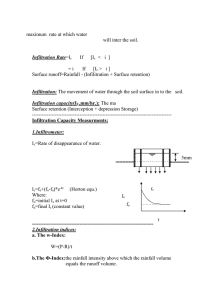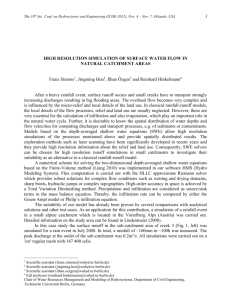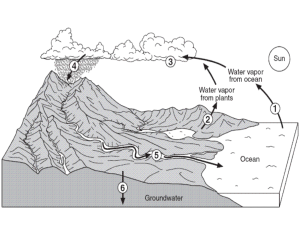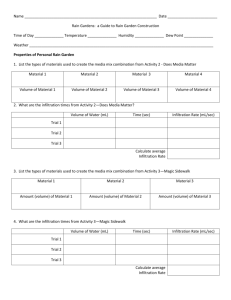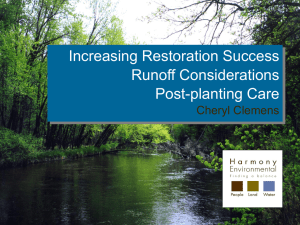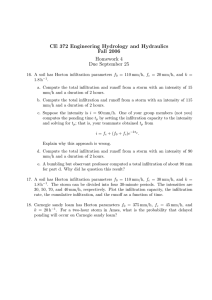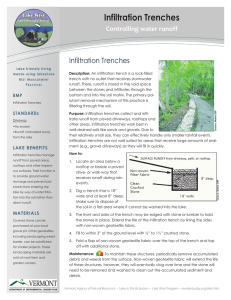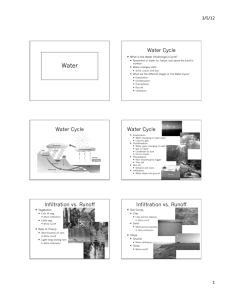Water Cycle Note Sheet Table 3
advertisement
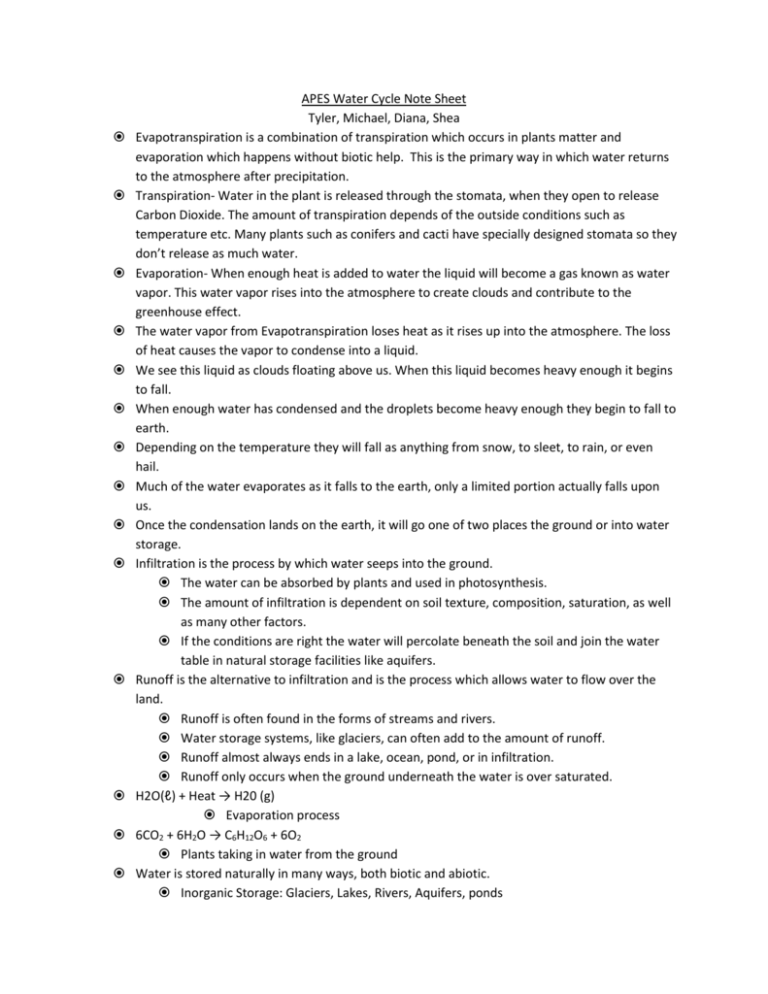
APES Water Cycle Note Sheet Tyler, Michael, Diana, Shea Evapotranspiration is a combination of transpiration which occurs in plants matter and evaporation which happens without biotic help. This is the primary way in which water returns to the atmosphere after precipitation. Transpiration- Water in the plant is released through the stomata, when they open to release Carbon Dioxide. The amount of transpiration depends of the outside conditions such as temperature etc. Many plants such as conifers and cacti have specially designed stomata so they don’t release as much water. Evaporation- When enough heat is added to water the liquid will become a gas known as water vapor. This water vapor rises into the atmosphere to create clouds and contribute to the greenhouse effect. The water vapor from Evapotranspiration loses heat as it rises up into the atmosphere. The loss of heat causes the vapor to condense into a liquid. We see this liquid as clouds floating above us. When this liquid becomes heavy enough it begins to fall. When enough water has condensed and the droplets become heavy enough they begin to fall to earth. Depending on the temperature they will fall as anything from snow, to sleet, to rain, or even hail. Much of the water evaporates as it falls to the earth, only a limited portion actually falls upon us. Once the condensation lands on the earth, it will go one of two places the ground or into water storage. Infiltration is the process by which water seeps into the ground. The water can be absorbed by plants and used in photosynthesis. The amount of infiltration is dependent on soil texture, composition, saturation, as well as many other factors. If the conditions are right the water will percolate beneath the soil and join the water table in natural storage facilities like aquifers. Runoff is the alternative to infiltration and is the process which allows water to flow over the land. Runoff is often found in the forms of streams and rivers. Water storage systems, like glaciers, can often add to the amount of runoff. Runoff almost always ends in a lake, ocean, pond, or in infiltration. Runoff only occurs when the ground underneath the water is over saturated. H2O(ℓ) + Heat → H20 (g) Evaporation process 6CO2 + 6H2O → C6H12O6 + 6O2 Plants taking in water from the ground Water is stored naturally in many ways, both biotic and abiotic. Inorganic Storage: Glaciers, Lakes, Rivers, Aquifers, ponds Organic Storage: Animals (the majority of animals are water based and store some in their bodies), All types of plants Human impact of water is an immense and complicated topic. The topics listed below are the human effects that are the most detrimental to the health of our water. Physical Change to the earth (e.g. Cutting down trees adds many minerals to the water that would not be there otherwise.) Climate Change (excess amounts of water are coming from glaciers and poles) Damming rivers (prevents natural flow of water) Pollution of water sources (releasing excess fertilizers into estuaries or polluting the atmosphere causing acid rain) Destruction of the water table for agricultural uses. Excess use of water in urban areas (leads to things like desalinization and gray water)
